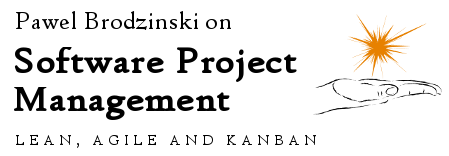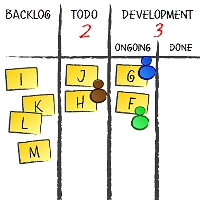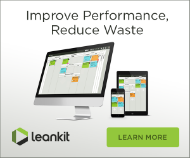I never fancied the standard standup schema. I mean I see value in sharing what the team did yesterday what the team is going to do today and what are the problems the team has.
Except these questions aren’t answered on a typical standup.
The first problem is that we answer what specific individuals have done and will do. In any but smallest teams it’s the wrong focus to have. I mean if there are two or three of us it’s very likely that such updates are meaningful. With a couple more people we gradually lose track, and eventually interest, in what exactly is happening in the rest of the team.
At the same we should be focusing on what is important for the team which may be something no one mentions because for example the biggest pain point is on a plate of someone who is absent or overwhelmed with other stuff that just doesn’t allow them to focus on the real problem.
The second problem is that very rarely someone really answers to anything by first two questions, namely the issues part is often omitted. I like tweaking the third question, for example to something that Liz Keogh proposes: ”what I would rather be doing.” It helps only a little bit though as it’s almost as easy to avoid this question as the original one.
The third problem is that with a bigger team a standup becomes just long and boring, and whenever a couple of people exchange a few sentences about any specific bit of work it shuts down almost all the rest of the team instantly.
A very typical change I introduce is a standup around a board, be it a task board, a Kanban board or what have you.
Then the discussion is mostly around important stuff that is happening right now and is visualized on the board. A typical pattern is: blockers first, expedite items second, stalled items third and then all the rest. I covered more elaborate version of this approach some time ago.
Such an approach means that not everyone, every single day speaks up. But whenever anyone has a problem or is just trying to solve an issue too long there’s definitely an update from them on the way.
Then, there’s always a call for action regarding important stuff, even if it just so happens that a default person for that item is unavailable.
This means that standups around a board encourage collective ownership of work.
In fact, there are way more call for action situations as this form of standup basically focuses on solving issues. This often means helping each other, taking over bits of work from others, etc. Whenever someone has hard time coping with all the stuff that waits for them they usually get an instant help.
This kind of a standup is also shorter than a classic one. After all you don’t mention all the boring stuff that just goes as planned – everyone can see that on the board, so what’s the point anyway?
It also is an occasion to catch all the inconsistencies on the board so it serves another purpose too. You don’t get that from a classic standup.
I would also point that this approach does very good job in terms of keeping work in progress low. It simply changes the dynamics of the discussion toward everything that is in progress from a team perspective instead of work started by individuals. The latter doesn’t take into account all the waiting queues.
Finally, it scales up pretty well. You can run such a standup with a dozen or more people and it still fits nicely 15 minute slot. It’s not rare when you need only one third of that even with such a big team.
The impact of changing the standup pattern is almost instant. All in all, it makes standups more valuable for the team. Try this approach, especially when you struggle with the current one right now.


 Subscribe RSS feed
Subscribe RSS feed Follow on Twitter
Follow on Twitter Subscribe by email
Subscribe by email



0 comments… add one